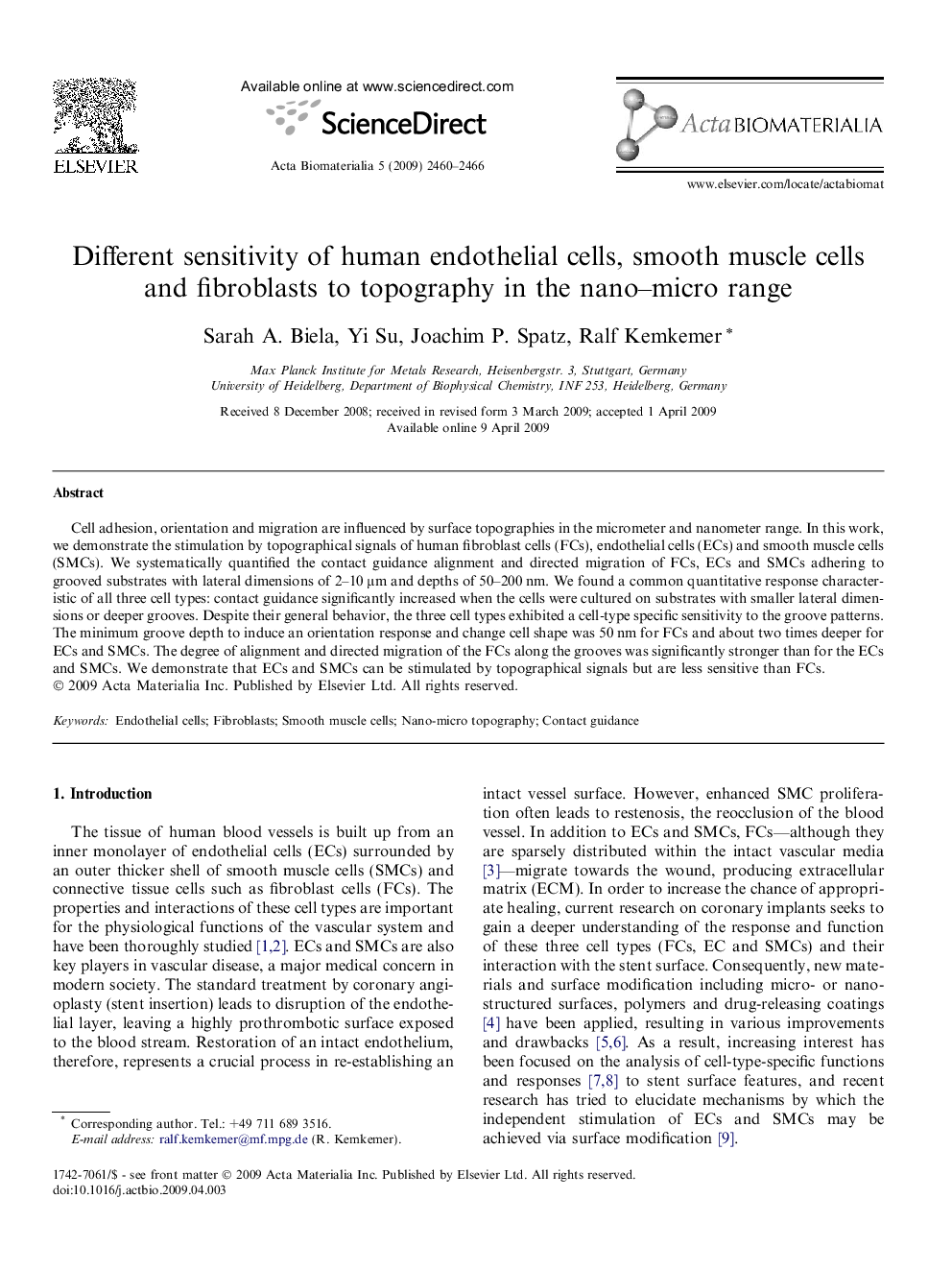| Article ID | Journal | Published Year | Pages | File Type |
|---|---|---|---|---|
| 1927 | Acta Biomaterialia | 2009 | 7 Pages |
Cell adhesion, orientation and migration are influenced by surface topographies in the micrometer and nanometer range. In this work, we demonstrate the stimulation by topographical signals of human fibroblast cells (FCs), endothelial cells (ECs) and smooth muscle cells (SMCs). We systematically quantified the contact guidance alignment and directed migration of FCs, ECs and SMCs adhering to grooved substrates with lateral dimensions of 2–10 μm and depths of 50–200 nm. We found a common quantitative response characteristic of all three cell types: contact guidance significantly increased when the cells were cultured on substrates with smaller lateral dimensions or deeper grooves. Despite their general behavior, the three cell types exhibited a cell-type specific sensitivity to the groove patterns. The minimum groove depth to induce an orientation response and change cell shape was 50 nm for FCs and about two times deeper for ECs and SMCs. The degree of alignment and directed migration of the FCs along the grooves was significantly stronger than for the ECs and SMCs. We demonstrate that ECs and SMCs can be stimulated by topographical signals but are less sensitive than FCs.
